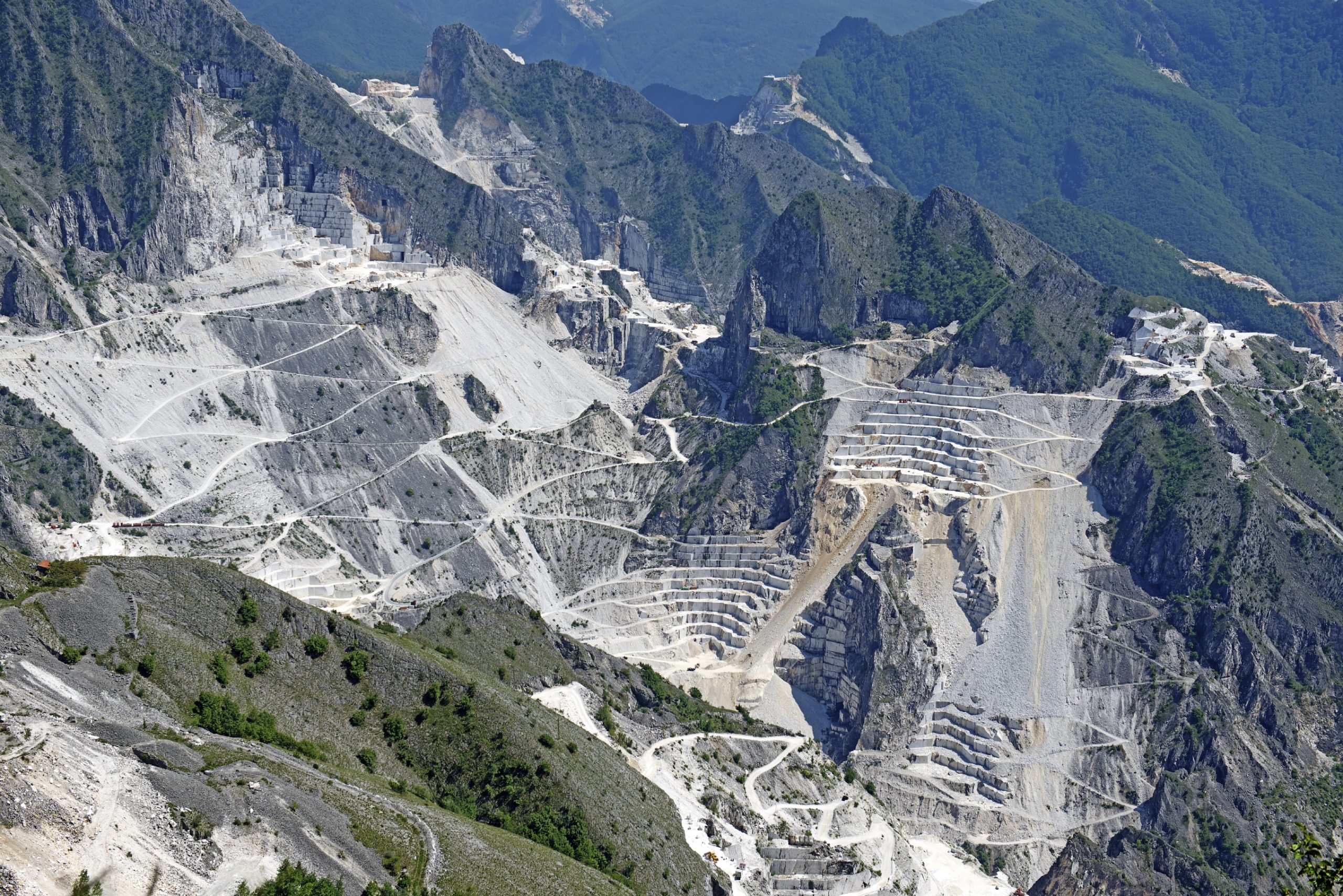Marvel in the Majestic Marble Mines of Carrara

June 19, 2017
When sailing along the west coast of Tuscany just north of Pisa, you will see jagged alps rising steeply from the narrow strip of land, glistening majestically.
These are the Apuan Alps, mountains that are the Carrara marble mines that gleam as though cloaked with snow all year round.
But the pristine white is not snow, it is the marble of the bare quarried faces of the mountains – the snow the gods made eternal. The effect is so surreal it would not be out of place in a mural in an Indian restaurant, but this breath-taking view belies a multi-million euro a year industry and the source of some of the most famous sculptures in the world – including Michelangelo’s Pietà and David.
The marble quarries of Carrara are situated in the valleys of Torano, Miseglia, Bedisano and Colonnata, where both white and coloured marbles are found – the amount of marble is staggering. From raw cut blocks waiting for export, rows of flawless reproductions of Michelangelo’s David, to the marble-clad centre of Carrara, it is clear that marble is the main protagonist of this area. Driving further up into the mountains around hairpin turns through the lush green forest does nothing to prepare you for the number and scale of the marble quarries that were first opened up by the Romans more than 2000 years ago.
Written records dated to 177 BC describe Romans who were sent to the colony of Luni with a full complement of slaves to extract the marble and ship it back to Rome for use in palaces and monuments – all engraved with A.U.PH. (ad usum phori – for use in the Forums) to avoid taxes. It was the white marble of Carrara that converted Rome from a city of brick huts to one of marble palaces.
The Renaissance was boom time for Carrara. Marble was de rigueur in Florence, Venice and Rome, and there was plenty of money being invested in art. Michelangelo travelled to the Alpi Apuane to choose his marble, and eventually to open up rival quarries to those of Carrara for his patrons the Medici. Michelangelo worked in the Serra gorge, favouring the whitest, most finely veined marble and he dreamed of carving the figure of a giant out of 5000 ft Monte Sagro.
By the 14th century, mining methods had not changed much from the times of the Romans. Stonecutters climbed for miles up the vertiginous peaks in squads to drill holes in the rock into which they drove wooden stakes. They then wet the wood, which expanded and split off huge blocks of marble.
The marble blocks, up to 40 tons each, were then slid down the mountain on logs with oxen, a technique called ‘Lizzatura’. Gunpowder was introduced in 1570 by the Marquis Malaspina, ruler of Carrara. However, this proved to be too destructive, reducing too much of the precious marble to dust, the legacy of which are the cascades of rubble that seem like snow from afar.
Today massive bulldozers and high-speed, diamond-edged cutting equipment mean greater efficiency of quarrying and better working conditions, but the effects on the landscape are notable. The quarries look like half-finished ziggurats, with Escher–like inverted ledges, sheer drops and chambers. There are entire peaks that have been cut in half.
A question does enter your mind as you take in the devastating effects of 2000 years of mining – just how long can the marble of Carrara last?
Richard Reeves is the founder of Essential Sailing and if you have been inspired to relax on a luxury sailing holiday, why not make this idyllic world your reality.
 For access to our special deals, discounts and promotions, please complete the form opposite; and, when you book your holiday, we will fit you out with our FREE Essential Sailing designer sailing jacket.
For access to our special deals, discounts and promotions, please complete the form opposite; and, when you book your holiday, we will fit you out with our FREE Essential Sailing designer sailing jacket.
